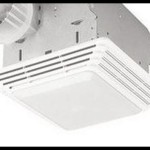How to Tile a Bathroom Wall Over Drywall
Tiling a bathroom wall over drywall is a common DIY project that can dramatically enhance the aesthetics and functionality of your bathroom. This guide will walk you through the step-by-step process, providing clear instructions and essential tips for achieving a professional-looking finish.
1. Preparation and Planning
Before you begin tiling, proper preparation is crucial for a successful outcome. Start by gathering the necessary tools and materials:
- Tiles
- Tile adhesive
- Grout
- Tile spacers
- Notched trowel
- Level
- Measuring tape
- Pencil
- Utility knife
- Rubber mallet
- Grout float
- Sponge
- Bucket
- Safety glasses
- Gloves
Next, measure the wall area to determine the required tile quantity and plan the layout. Consider the location of fixtures, such as showerheads, and ensure proper drainage by sloping the wall slightly towards the shower drain. Mark the starting point for tiling, taking into account any necessary adjustments for the grout lines.
2. Installing the Backer Board
Installing a backer board over drywall is essential for waterproofing and preventing water damage. Backer boards are specifically designed to withstand moisture and provide a solid foundation for tile installation. Follow these steps:
- Cut the backer board to size using a utility knife or a circular saw with a diamond blade.
- Apply construction adhesive to the back of the board, spreading it evenly with a notched trowel.
- Press the backer board firmly against the drywall and secure it with screws or nails, ensuring even spacing and avoiding over-tightening.
- Tape the seams between backer board panels with a waterproof membrane tape, like Schluter Kerdi-Band.
Allow the adhesive to cure according to the manufacturer's instructions before proceeding with the next step.
3. Applying Tile Adhesive and Installing Tiles
Once the backer board is installed and cured, you can apply tile adhesive and install the tiles. Start by applying a thin layer of tile adhesive to the backer board using a notched trowel. Ensure that the adhesive is evenly distributed and that the notches are filled with adhesive.
Place the first tile at the starting point, making sure it is level and flush with the wall using a level. Continue placing tiles, using spacers to maintain consistent grout lines. Gently tap the tiles into the adhesive using a rubber mallet to ensure they are firmly set. For larger tiles, use a level and a tile leveling system for added stability.
4. Grouting and Cleaning
After the tile adhesive has set completely, typically 24 hours or as specified by the manufacturer, you can grout the joints. Apply grout using a grout float, pressing it firmly into the joints and wiping away excess grout with a damp sponge. Allow the grout to dry for a few hours, then clean the tiles thoroughly with a damp sponge to remove any residue.
Once the grout has fully cured, you can seal it with a grout sealant to prevent stains and enhance its durability. Allow the sealant to dry completely before using the shower or tub.
5. Final Touches
After tiling, it's essential to apply caulk around the edges of the shower or tub. Caulk provides a waterproof seal around the fixtures and helps prevent water damage. Make sure to apply caulk evenly and smooth it out with a damp finger or a caulk tool.
Once the caulk has cured, your bathroom tile project is complete. You can now enjoy the beauty and functionality of your newly tiled bathroom.

Tile Over Drywall Showers A Common But Bad Practice Scott Hall Remodeling

Shower Tile Installation Step By Four Generations One Roof

Can You Tile Over Drywall In A Shower Find Out Now Upgradedhome Com

Waterproof Bathtub Shower Walls Over Drywall

The Complete Guide To Installing Tile On Shower Or Bathtub Walls

Everything About Installing Tiles On Drywall

Can You Tile Over Drywall Is It Safe Home Efficiency Guide

Replace Bathroom Drywall With Tiled Walls Fix It Handyman

Can You Tile Over Drywall Must See

Everything About Installing Tiles On Drywall
Related Posts







